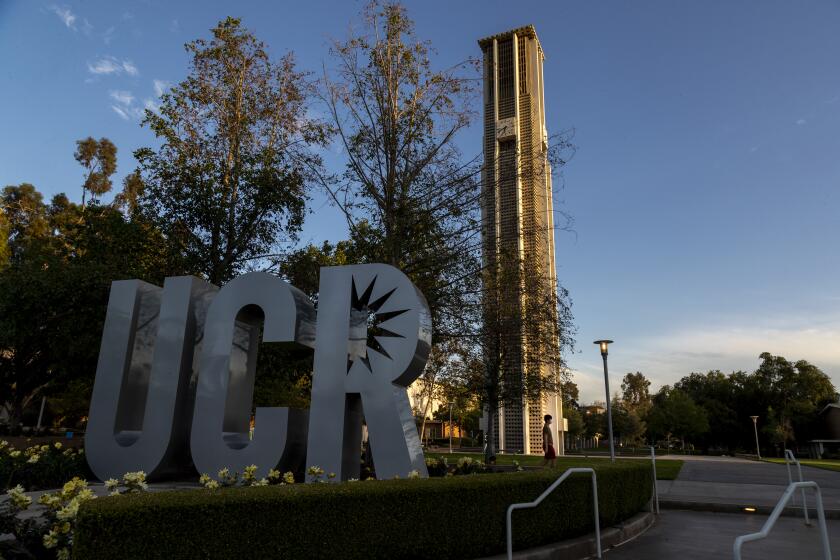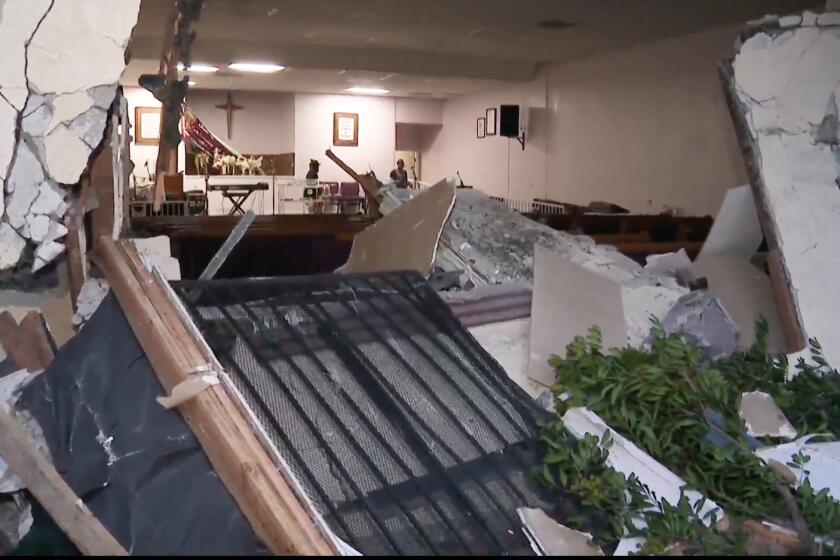Around the San Gabriel Valley : When a very young child, a baby really, dies in the unspeakably horrible way Jessica did, it touches all of us.
Last week at St. Martha’s Church in Valinda, an unincorporated area in the fast-growing south San Gabriel Valley, there was a funeral for a 2-year-old girl.
Any time a child dies it is tragic, because it upsets the natural order of things. Old people die; children should first be able to live.
Jessica Aispuro wasn’t. She moved here with her mother from her native Mexico a year ago. People in the quintessentially Californian neighborhood of winding streets and cul-de-sacs in West Covina where she lived with her mother and her mother’s boyfriend saw her playing sometimes, and once, standing at a window crying.
But we really know little of the California half of Jessica’s life. All we have is a grainy picture of a moppet with straight shiny hair, half a smile and, in retrospect, big haunting eyes.
What we do know about are the last days, the ones in the hospital. Her 25-year-old mother is in custody, charged with being an accessory after the fact to murder, rape, sodomy and child molestation. The boyfriend is in Los Angeles County Jail, on murder, child abuse, sodomy and child molestation charges.
Strangers prayed at Jessica’s funeral. A woman who never met Jessica donated burial clothes. People sent money: More than $300 has come to St. Martha’s, Father William Leser said, with the biggest donation from the area post office. Money sent to the funeral home was used to fly Jessica’s body back home to Mexico. Since Custer Christiansen Mortuaries donated its services, Leser has earmarked the rest of the money for the church’s abuse program.
When a very young child, a baby really, dies in the unspeakably horrible way Jessica did, it touches all of us. How, we ask ourselves, can this happen?
Two days after the funeral and just up the hill from St. Martha’s, at a luncheon in the City of Industry, Los Angeles Archbishop Roger M. Mahony was talking about growing up in the San Fernando Valley. Back in the 1940s and 1950s, he said, if he or any of his friends did anything they weren’t supposed to, even three blocks away, their parents knew about it before they got home.
That’s because everybody knew everybody in the neighborhood. In 1989, that is seldom the case. Mary Gauvain, assistant professor of psychology at Scripps College in Claremont, says half of us move every four years. We don’t live near grandmothers and uncles and cousins, and we really don’t know our neighbors.
Mental health professionals are noticing more reports of loneliness, isolation, not being connected, Gauvain says. Not only do we live far from our roots, but we wall ourselves inside or in fenced back yards.
“In our society, we strive for independence. The nuclear family is viewed as a kingdom,” Gauvain says. “Our culture somehow thinks of children as subjects of their parents, belonging to their parents as opposed to people in their own right. . . . Private transgressions are allowed to continue because they happen within the confines of a nuclear family structure.”
In his huge parish--5,000 families are in St. Martha’s boundaries--Leser sees victims of abuse regularly. “One of the things that you have often with abuse, any time of abuse,” he says, “is people who are abused pull back from everybody.”
After reading news reports of Jessica’s death, a mother of two young children left the husband who had been beating her, Leser said Thursday.
“Yesterday, she went back to him. She has a 3 1/2-year-old son who has no hair (from anxiety) from watching his mother being beaten. . . . She says (the husband) will change.
“The next thing you know, we’re going to be burying her.”
And what is even worse, since experts say abusers often were victims of abuse and pass the vicious chain on to their children, we will have a new generation of Jessicas.
More to Read
Start your day right
Sign up for Essential California for news, features and recommendations from the L.A. Times and beyond in your inbox six days a week.
You may occasionally receive promotional content from the Los Angeles Times.





